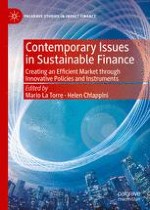Sustainable investments, although not yet working under a comprehensive regulatory framework, represent a growing, worldwide phenomenon. Such growth reflects the renewed public and private interest in environmental issues such as climate change, poverty and financial inclusion, as well as growing support from conscious investors looking to finance environmental and social initiatives. However, despite the interest that sustainable investments are gaining among governors, investors and practitioners, important challenges remain that must be addressed.
Comprising a collection of research presented at the 2nd Social Impact Investments International Conference, this contributed volume offers a global analysis of the current state of the sustainable finance sector, proposing solutions to challenging obstacles and exploring topics including impact investing, social impact bonds and green banking. Providing real-life case studies from Europe, Latin America and Africa, this book is an insightful and timely read for scholars interested in sustainable finance, social impact investing, development finance and alternative finance.
